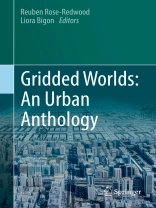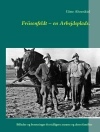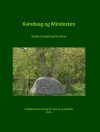This book is the first edited collection to bring together classic and contemporary writings on the urban grid in a single volume. The contributions showcased in this book examine the spatial histories of the grid from multiple perspectives in a variety of urban contexts. They explore the grid as both an indigenous urban form and a colonial imposition, a symbol of Confucian ideals and a spatial manifestation of the Protestant ethic, a replicable model for real estate speculation within capitalist societies and a spatial framework for the design of socialist cities. By examining the entangled histories of the grid, Gridded Worlds considers the variegated associations of gridded urban space with different political ideologies, economic systems, and cosmological orientations in comparative historical perspective. In doing so, this interdisciplinary anthology seeks to inspire new avenues of research on the past, present, and future of the gridded worlds of urban life.
Gridded Worlds is primarily tailored to scholars working in the fields of urban history, world history, urban historical geography, architectural history, urban design, and the history of urban planning, and it will also be of interest to art historians, area studies scholars, and the urban studies community more generally.
Daftar Isi
Introduction.- 1: The Origin and Spread of the Grid-Pattern Town.- 2: Genealogies of the Grid: Revisiting Stanislawski’s Search for the Origin of the Grid-Pattern Town.- 3: The City Shaped: “The Grid and Politics” and “Laying Out the Grid”.- 4: Plan and Constitution—Aristotle’s Hippodamus: Towards an “Ostensive” Definition of Spatial Planning.- 5: Chinese Spatial Strategies: The Grid Plan as Ideology.- 6: Military Considerations and Colonial Town Planning: France and New France in the Seventeenth Century.- 7: From Diffusionism to the Production of Space: The Lébou Pènç and the Grid in the Urban History of Senegal.- 8: Indigenous Architecture and the Spanish-American Gridplan-Plaza in Mesoamerica and the Caribbean.- 9: Gridiron Cities and Checkerboard Towns.- 10: American Cities: The Grid Plan and the Protestant Ethic.- 11: The Grid as City Plan: New York City and Laissez-Faire Planning in the Nineteenth Century.- 12: The Dark Side of the Grid: Power and Urban Design.- 13: Gridded Lives: Why Kazakhstan and Montana Are Nearly the Same Place.- 14: Ladders: Urban Implosion.- 15: Urban Grids and Urban Imaginaries: City to Cyberspace, Cyberspace to City.- Conclusion.
Tentang Penulis
Reuben Rose-Redwood is an Associate Professor of Geography and Chair of the Committee for Urban Studies at the University of Victoria in British Columbia, Canada. His research focuses on the cultural politics of place, the spatial organization of cities, and the historical geographies of the geo-coded world. He is the co-editor of Performativity, Politics, and the Production of Social Space (2014, with Michael Glass), The Political Life of Urban Streetscapes: Naming, Politics, and Place (2018, with Derek Alderman and Maoz Azaryahu), and has published in a broad range of scholarly journals, including Progress in Human Geography, Social & Cultural Geography, Urban History, and the Annals of the American Association of Geographers. His work on the historical geography of New York’s grid street plan has also been featured in various popular media outlets, such as the Discovery Channel, History Channel, and New York Times.
Liora Bigon is a Senior Lecturer in the General Studies Department at Holon Institute of Technology (HIT) and a Research Fellow in the Harry S. Truman Research Institute of the Hebrew University of Jerusalem. Her research interests include urban and planning histories of Europe and Africa, and she regularly pursues fieldwork in Sub-Saharan African countries and has published over seventy peer-reviewed articles, encyclopedic entries, and books, including: A History of Urban Planning in Two West African Colonial Capitals: Residential Segregation in British Lagos and French Dakar, 1850-1930 (2009), Garden Cities and Colonial Planning: Transnationality and Urban Ideas in Africa and Palestine (2014, with Yossi Katz), and French Colonial Dakar: The Morphogenesis of an African Regional Capital (2016).












